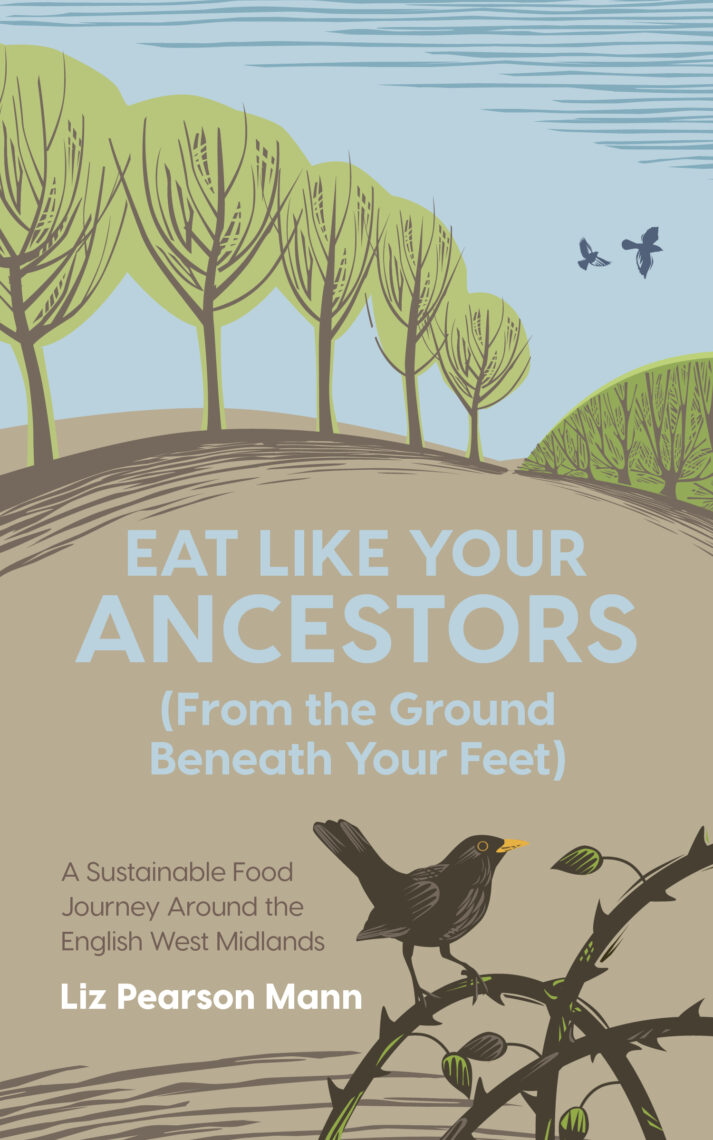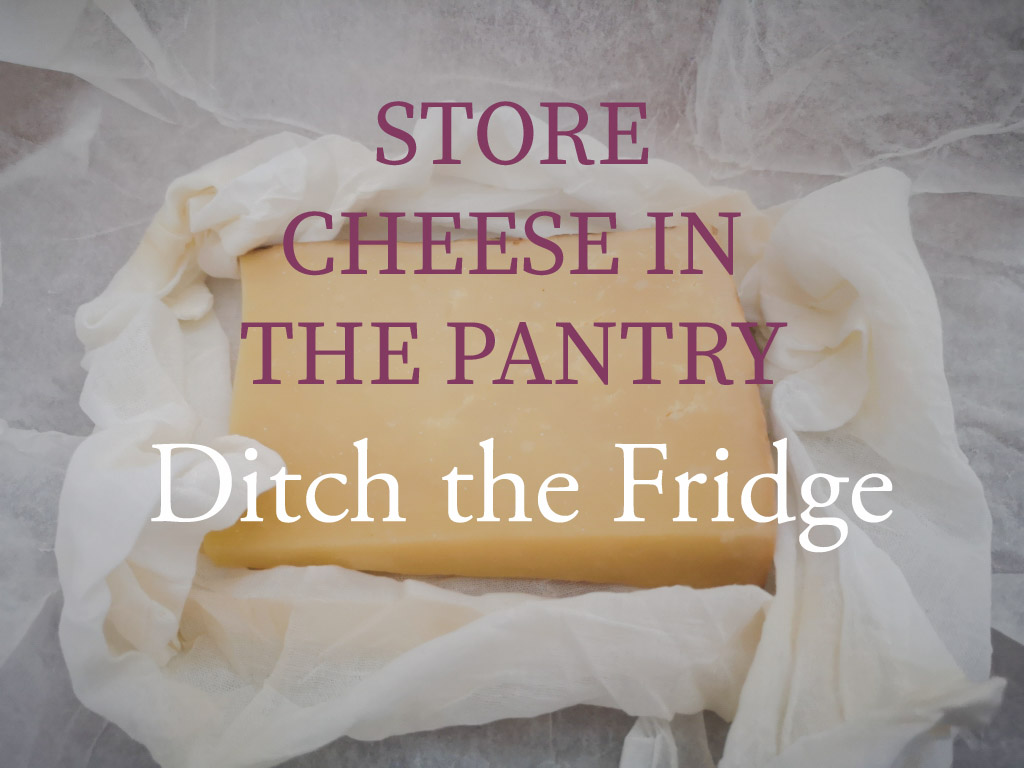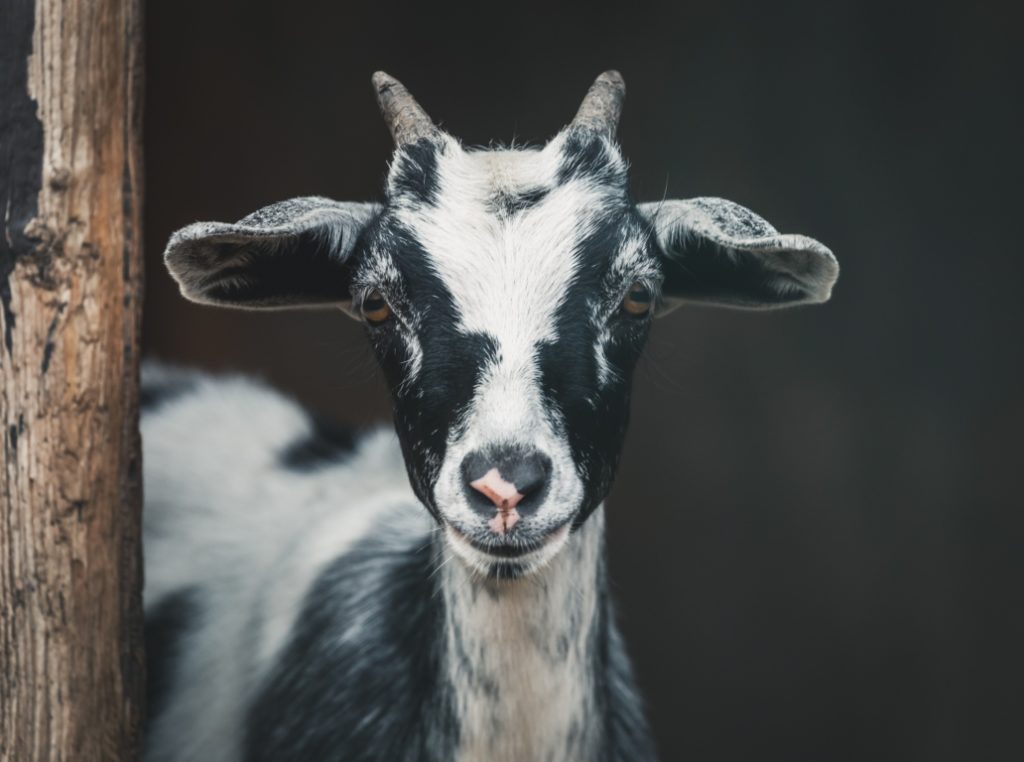Cheese: take the milk, skim off the curds (solids) from the whey (liquids), press, ferment and age. Hey presto, you have a solid form of milk. We’ve long used this to extend its life and get us through lean times. A tradition thousands of years old. Store cheese in the pantry, and it’ll taste and store better.
Break open a crusty bread roll, add a wedge of cheese and some pickles and you have a timeless plate of nutritious food. Natural food, at the heart of many food cultures around the world – particularly in temperate or chilly climes. This is the fat of the land: and there are large expanses of land worldwide, best kept under permanent pasture: grazed by cows, sheep, goats and other animals. Here in mild, wet, windy Britain, particularly so.
We’re so used to cheese being suffocated in plastic packets in the fridge. But did you know that it tastes better stored out of the fridge, out of plastic and kept at cool room temperature?
I’d been stuffing the fridge full, and felt it needed a clear out, when the other day my husband, Andy, brought home a large slab of delicious Cheddar Gorge cheddar from a local farm shop. I’d been storing cheese in bees wax wraps in the fridge, or in a small ceramic cheese bell out of the fridge. It was too big for any wrappings or the cheese bell. So in a effort to keep the cheese away from plastic I turned to the pantry, or understairs cupboard. I was overdue clearing this out too, and as I described recently, I’d been thinking more about traditional food storage, and being less dependant on the fridge freezer.
How to Prepare Cheese for the Pantry
Keep a small amount out of the fridge, easily accessed, where you can dive in with a knife on a whim, but then prepare some for medium-term, or even longterm storage. Wipe the cut edges of a larger piece of cheese with distilled white vinegar and leave to dry.
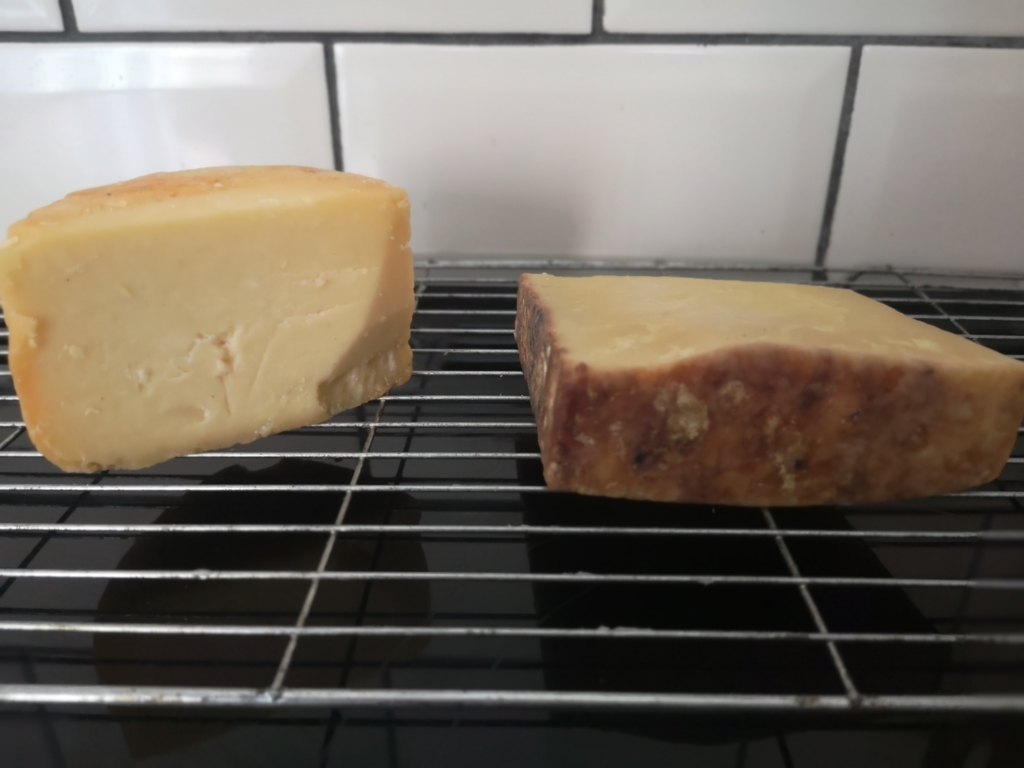
Soak a piece of cheesecloth (or muslin cloth) in distilled white vinegar, wring out until just damp, then wrap cheese.
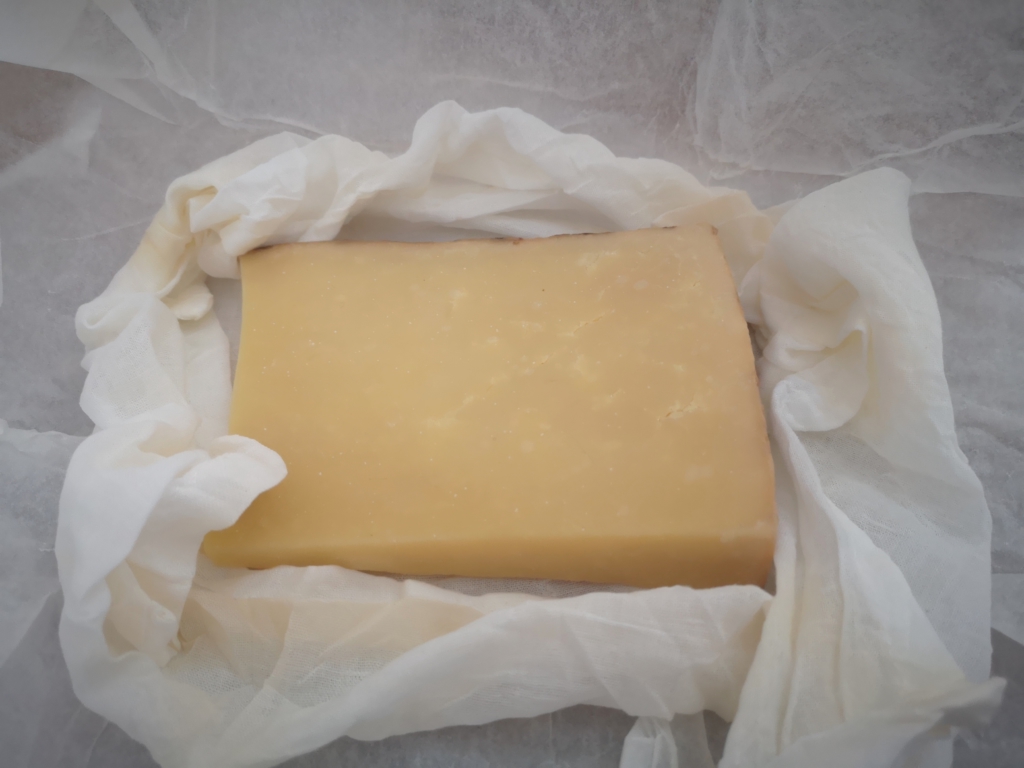
Take the cloth-wrapped cheese, then wrap in two layers of parchment/baking paper or cheese paper.
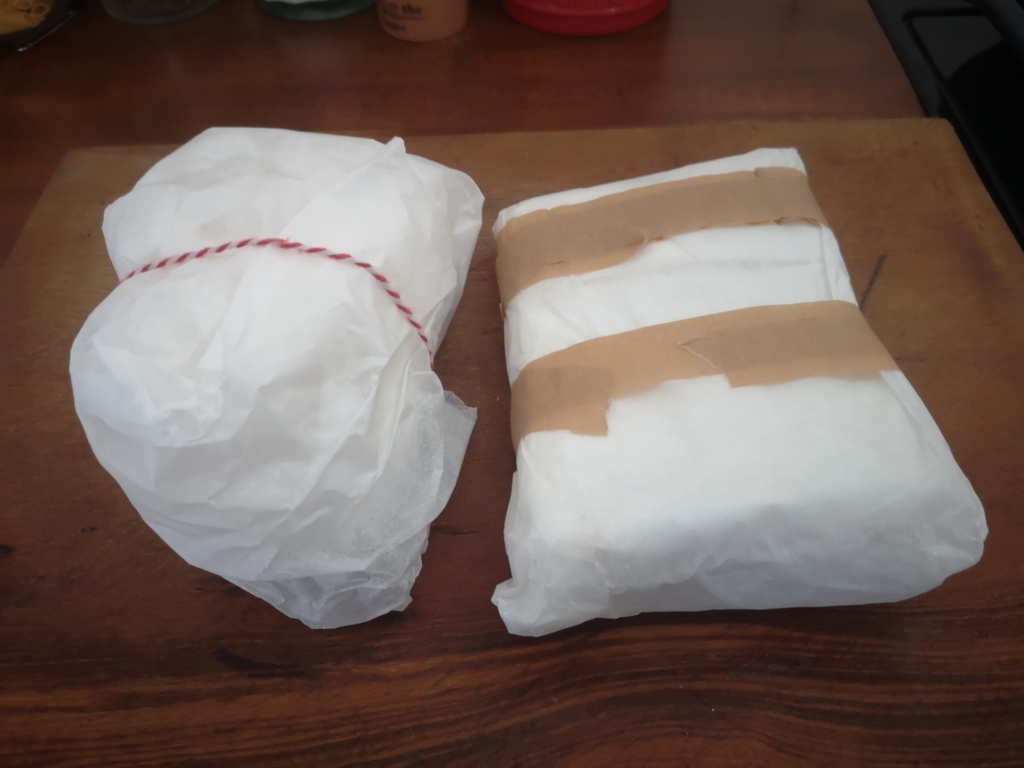
Why Store Cheese In the Pantry?
I said, when talking about traditional food storage, that many foods taste and store better kept out of the fridge. But I’d also noticed how we’re doing a good job of chilling food (and customers in supermarkets) whilst heating up the planet. What can we do? I thought, at the very least, if we keep our fridge freezer lightly stocked we’d be able to ‘see the wood for the trees’ and waste less of the food inside. If we get more used to traditional food storage, many of us might downsize, or even……ditch the fridge.
I’m not sure yet where we’ll end up in our house, as the decision isn’t only mine!
Cows, Goats, Sheep, and Other Animals
When we think of milk we think of cows. We could, though, drink milk and eat cheese from sheep and goats too, as we have done for thousands of years. And in other countries, different animals (like yaks) are part of dairying pastoral culture. A culture often born out of nomadic life, traversing deserts, mountain ranges and windswept steppes and plateaus.
We don’t tend to associate such harsh environments with dairy country in the British Isles – or a life almost completely dependent on livestock. But it’s true that there are large areas of our country that are not only most suited to pasture, but pasture that supports dairying.
Dairying on the ‘Wics’ Or ‘Wicks’
Cows like green, lush grass. They want to wrap their tongues around a clump of herb-rich grass and tear at it. They still, though, leave the roots and the base of the plants to regrow. We have plenty of land like this that holds water well – too well for part of the year, when it lies waterlogged, or at least too wet to sow crops.
Think of rivers snaking through the landscape, alongside which there are miles and miles of low-lying floodplain. Land we’re best leaving as meadowland, growing long grass that farmers can harvest and feed to livestock overwinter. Sloping gently up from floodplains are the lower gravel terraces. Farmers have long grazed cattle on the floodplain for part of the year, then shut the land up to grow tall meadow grass, after which they move the animals upslope and onto these lower terraces.
Around Worcester, where I live, we find many places with names ending in ‘wick’, derived from the Saxon word ‘wic’, and they’re associated with dairying. Between the River Severn and the Teme – Lower Wick, Upper Wick, Rushwick, and Henwick, on the west side of the river. Walk just north of where I live and we come to Northwick on the eastern side. Hardwick lies alongside the River Avon, and Knightwick further along the River Teme. These are summer pastures. Do you live somewhere that is natural dairy country?
Cheese making has always been a way of avoiding waste, and as such, is one of our natural Zero Waste Ways With Fat and Oil.
We may have lost sight of why milk, butter and cheese lie at the heart of our food culture around here. This is not just gratuitous food.
Sheep Country and Cattle Country
I’ve mentioned in my book (out now!) that my husband, Andy, grew up on a small family farm in north Worcestershire. Their farm stood on red sandy soil, not ideal for cattle, but fine for sheep. Short, tufty grass grows on soils weathered out of the red rock beneath, on which sheep can nibble. Not all soils are the same: not all grass is the same. Vive La Différence!
Read more in Chapter 2: Red Rock Farm in Eat Like Your Ancestors (From the Ground Beneath Your Feet): A Sustainable Food Journey Around the English West Midlands.
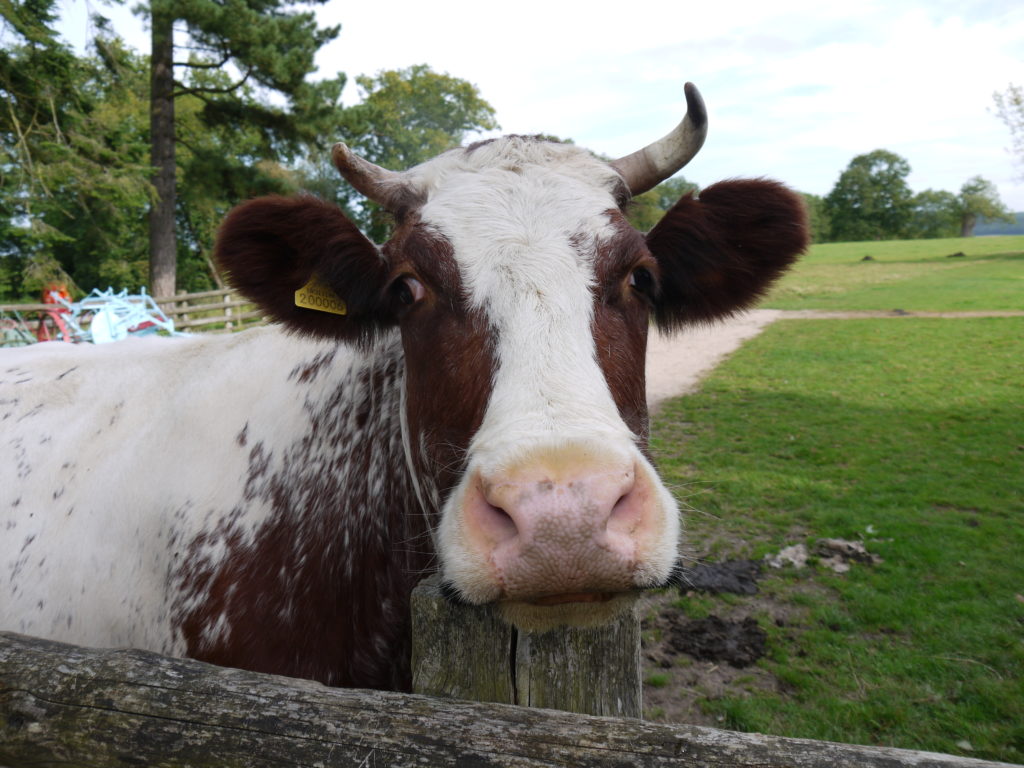
Happy Healthy Cows – Better Cheese
Cows like to be out on pasture. Preferably woodland pasture, grazing on herb-rich grass and browsing on leaves. Herb-rich pasture and ‘unimproved’ grassland gives them a wide variety of phyto-nutrients. They like hedgerows and trees for shade too.
Calf at Foot dairies do more to make the life of a dairy cow a happy one, as they’re able to suckle their calves until they’re fully weaned. Read about Fiona Proven’s Calf at Foot dairy in Doing dairy differently: the calf-friendly, cow-kind micro-dairy by the UK Sustainable Food Trust. Check out the Cow-Calf Dairies list for the UK.
We may hear about cows confined in abysmal conditions in confined feedlots, but they’re rare in this country. There are still plenty of small, family farms grazing livestock on pasture for much of the year. They need our support, and if we buy their produce we’ll do more to speed the decline of industrialised dairy farming than any other action. This is a grass-roots solution that brings us back to our roots.
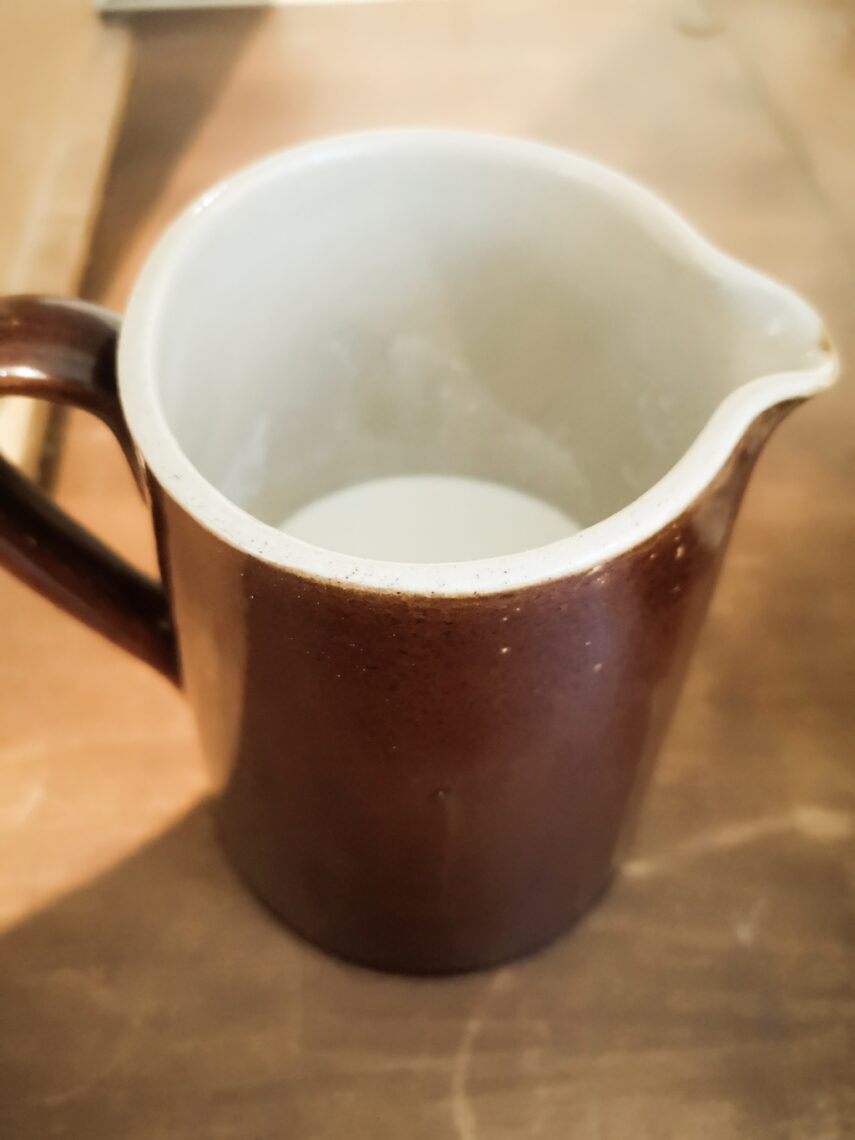
Dairy Goodness
Milk gives us essential nutrients – nutrients that we can’t live without and can’t synthesise in our bodies. Milk, butter, cheese, yoghurt and kefir contain healthy fats, fat soluble vitamins, and much more, as part of a nutrient-dense diet.
What is a nutrient-dense diet? Chris Kessler explains What is Nutrient Density and Why Is it Important?
If you avoid dairy because you’re intolerant, you may be surprised to know that many people are finding that they’re not intolerant to all dairy (particularly cheese). Or they’ve completely reversed their dairy intolerance by improving their gut health (gut biome). Our intolerance reactions can be complicated. You may be intolerant to industrially-processed milk (homogenised and pasteurised), but fair better with non-homogenised raw milk from pasture-fed animals. Or you may find the reduced lactose levels in yoghurt, kefir and cheese are fine for you. Check out 6 foods That Are Naturally Low in Lactose.
Keep Evergreen Skills Alive
In a world where big food corporates are taking over our food supply, seeking out some traditionally made cheese helps keep evergreen/artisan skills alive. Traditionally made hard cheeses store well – they’re made that way.
This is long-lived knowledge passed down through generations by people who didn’t make cheese in factories . They made cheese in homes, in dairy rooms or outbuildings, and in many cases matured in cellars and caves. Think of cheddar matured in Wookey Hole caves and Stilton cheese. I grew up in Leicestershire, on the border of Rutland – home of Silton cheese. A best friend from school worked for a while at Long Clawson Dairy mentioned in the above article.
Cheese isn’t just cheese. There’s a whole world to explore. Coming up – charcuterie in the pantry. Why we’ve always relied on preserved smoked and dry-cured meat.
I hope I’ve encouraged you to want to Eat Like Your ancestors. That’s’ the title of my book, centred on a journey around where I live, but relevant anywhere. It’s out now….
